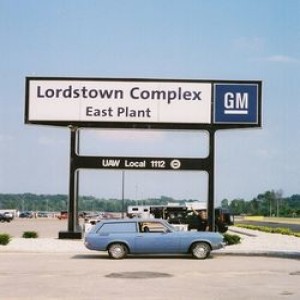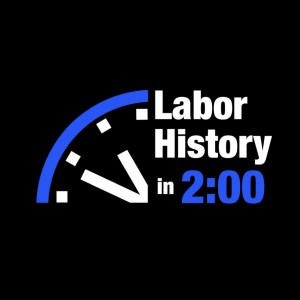
- Podcast Features
-
Monetization
-
Ads Marketplace
Join Ads Marketplace to earn through podcast sponsorships.
-
PodAds
Manage your ads with dynamic ad insertion capability.
-
Apple Podcasts Subscriptions Integration
Monetize with Apple Podcasts Subscriptions via Podbean.
-
Live Streaming
Earn rewards and recurring income from Fan Club membership.
-
Ads Marketplace
- Podbean App
-
Help and Support
-
Help Center
Get the answers and support you need.
-
Podbean Academy
Resources and guides to launch, grow, and monetize podcast.
-
Podbean Blog
Stay updated with the latest podcasting tips and trends.
-
What’s New
Check out our newest and recently released features!
-
Podcasting Smarter
Podcast interviews, best practices, and helpful tips.
-
Help Center
-
Popular Topics
-
How to Start a Podcast
The step-by-step guide to start your own podcast.
-
How to Start a Live Podcast
Create the best live podcast and engage your audience.
-
How to Monetize a Podcast
Tips on making the decision to monetize your podcast.
-
How to Promote Your Podcast
The best ways to get more eyes and ears on your podcast.
-
Podcast Advertising 101
Everything you need to know about podcast advertising.
-
Mobile Podcast Recording Guide
The ultimate guide to recording a podcast on your phone.
-
How to Use Group Recording
Steps to set up and use group recording in the Podbean app.
-
How to Start a Podcast
-
Podcasting
- Podcast Features
-
Monetization
-
Ads Marketplace
Join Ads Marketplace to earn through podcast sponsorships.
-
PodAds
Manage your ads with dynamic ad insertion capability.
-
Apple Podcasts Subscriptions Integration
Monetize with Apple Podcasts Subscriptions via Podbean.
-
Live Streaming
Earn rewards and recurring income from Fan Club membership.
-
Ads Marketplace
- Podbean App
- Advertisers
- Enterprise
- Pricing
-
Resources
-
Help and Support
-
Help Center
Get the answers and support you need.
-
Podbean Academy
Resources and guides to launch, grow, and monetize podcast.
-
Podbean Blog
Stay updated with the latest podcasting tips and trends.
-
What’s New
Check out our newest and recently released features!
-
Podcasting Smarter
Podcast interviews, best practices, and helpful tips.
-
Help Center
-
Popular Topics
-
How to Start a Podcast
The step-by-step guide to start your own podcast.
-
How to Start a Live Podcast
Create the best live podcast and engage your audience.
-
How to Monetize a Podcast
Tips on making the decision to monetize your podcast.
-
How to Promote Your Podcast
The best ways to get more eyes and ears on your podcast.
-
Podcast Advertising 101
Everything you need to know about podcast advertising.
-
Mobile Podcast Recording Guide
The ultimate guide to recording a podcast on your phone.
-
How to Use Group Recording
Steps to set up and use group recording in the Podbean app.
-
How to Start a Podcast
-
Help and Support
- Discover

On this day in labor history, the year was 1972.
That was the day autoworkers at GM’s Chevy Vega plant in Lordstown, Ohio walked out on strike.
The strike lasted for 18 days.
The issues that fueled it were reminiscent of the sit-downs and wildcats that built the UAW in the 30s and 40s.
Workers at Lordstown wanted greater control over the production process.
The young, integrated workforce of the 1960s social protest era was fed-up with long days, forced overtime, increased automation and dangerous speedup on the assembly line.
Long-standing grievances numbered in the thousands and disciplinary firings were common. Absenteeism was rampant.
Morale was so low that cars left the assembly line incomplete or vandalized.
By the time the strike ended, many felt it was called to simply allow workers to blow off steam.
There was no real change to the production process.
But jobs eliminated in the 1970 contract were restored and some 1400 disciplinary layoffs were dropped.
The worker malaise suffered there came to be known as the “Lordstown Syndrome.”
In his book Stayin’ Alive: The 1970s and the Last Days of the Working Class, Jefferson Cowie notes that the strike compelled the Senate to hold hearings on alienation at work.
Its’ committee produced the report Work in America.
This report confirmed, “many workers at all occupational levels feel locked in, their mobility blocked, the opportunity to grow lacking in their jobs, challenge missing from their tasks.”
Cowie concludes that the strike and report “initiated the quality of work life movement that sought to redesign work, introduce automation differently and invest in ‘human relations’ strategies, most of which continued to empower management, not workers—albeit with a gentler hand.”
More Episodes
 2025-09-12
2025-09-12
 2025-09-11
2025-09-11
 2025-09-10
2025-09-10
 2025-09-09
2025-09-09
 2025-09-08
2025-09-08
 2025-09-07
2025-09-07
 2025-09-05
2025-09-05
 2025-09-04
2025-09-04
 2025-09-03
2025-09-03
 2025-09-02
2025-09-02
 2025-08-31
2025-08-31
 2025-08-30
2025-08-30
 2025-08-29
2025-08-29
 2025-08-28
2025-08-28
 2025-08-27
2025-08-27
 2025-08-26
2025-08-26
 2025-08-25
2025-08-25
Create your
podcast in
minutes
- Full-featured podcast site
- Unlimited storage and bandwidth
- Comprehensive podcast stats
- Distribute to Apple Podcasts, Spotify, and more
- Make money with your podcast
It is Free
- Privacy Policy
- Cookie Policy
- Terms of Use
- Consent Preferences
- Copyright © 2015-2025 Podbean.com


